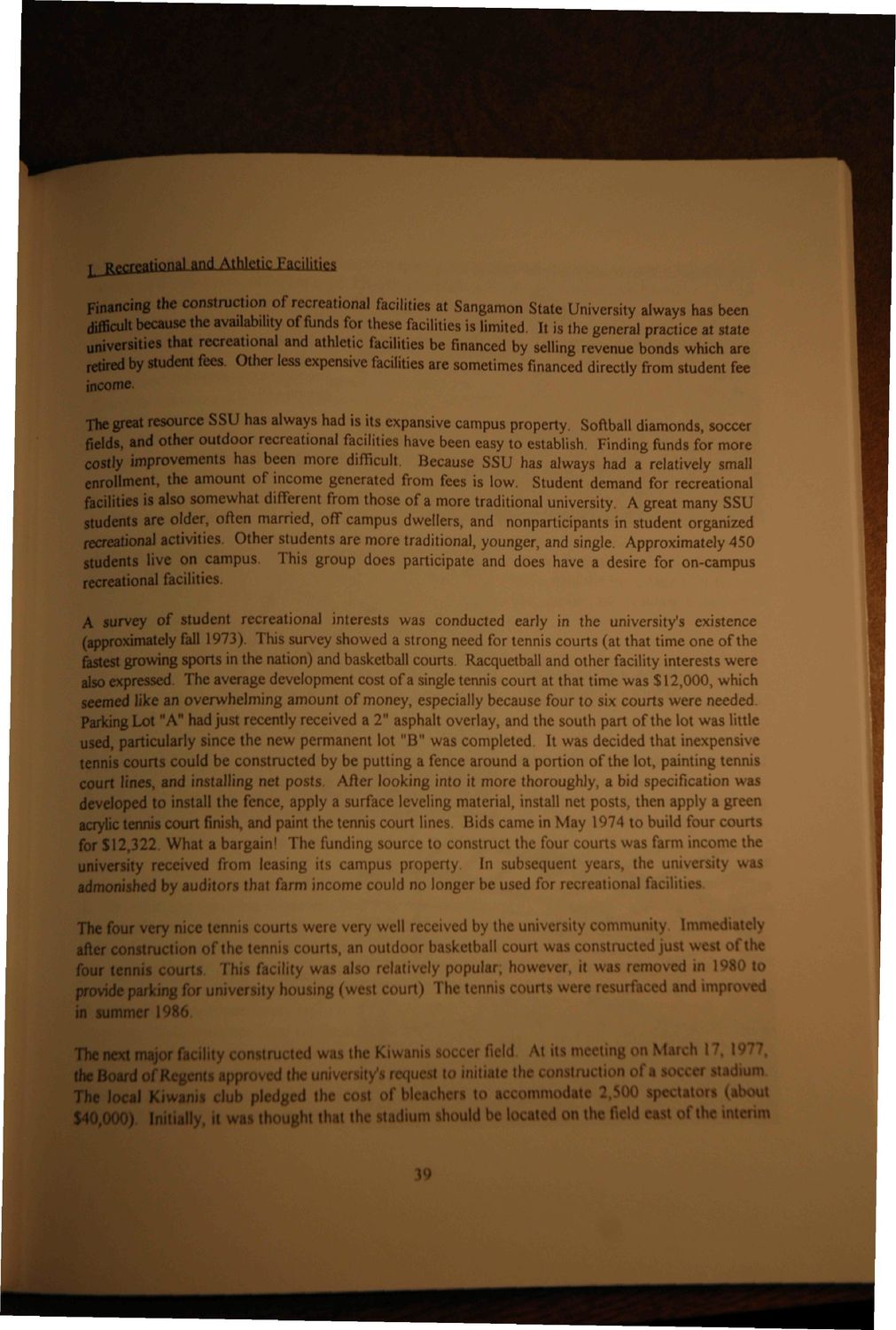| |
| |
Caption: UIS History 1969-1995 (Sangamon State Univ)
This is a reduced-resolution page image for fast online browsing.

EXTRACTED TEXT FROM PAGE:
LJjjCreatiftnal Pnf* Athletic Facilities Financing the construction of recreational facilities at Sangamon State University always has been difficult because the availability of funds for these facilities is limited. It is the general practice at state universities that recreational and athletic facilities befinancedby selling revenue bonds which are retired by student fees. Other less expensive facilities are sometimesfinanceddirectly from student fee income. •flie great resource SSU has always had is its expansive campus property. Softball diamonds, soccer fields, and other outdoor recreational facilities have been easy to establish. Finding funds for more costly improvements has been more difficult. Because SSU has always had a relatively small enrollment, the amount of income generated from fees is low. Student demand for recreational facilities is also somewhat different from those of a more traditional university. A great many SSU students are older, often married, off campus dwellers, and nonparticipants in student organized recreational activities. Other students are more traditional, younger, and single. Approximately 450 students live on campus. This group does participate and does have a desire for on-campus recreational facilities. A survey of student recreational interests was conducted early in the university's existence (approximately fell 1973). This survey showed a strong need for tennis courts (at that time one of the fastest growing sports in the nation) and basketball courts. Racquetball and other facility interests were also expressed. The average development cost of a single tennis court at that time was $12,000, which seemed like an overwhelming amount of money, especially because four to six courts were needed. Parking Lot "A" had just recently received a 2" asphalt overlay, and the south part of the lot was little used, particularly since the new permanent lot "B" was completed. It was decided that inexpensive tennis courts could be constructed by be putting a fence around a portion of the lot, painting tennis court lines, and installing net posts. After looking into it more thoroughly, a bid specification was developed to install the fence, apply a surface leveling material, install net posts, then apply a green acrylic tennis courtfinish,and paint the tennis court lines. Bids came in May 1974 to build four courts for $12,322. What a bargain! The funding source to construct the four courts was farm income the university received from leasing its campus property. In subsequent years, the university was admonished by auditors that farm income could no longer be used for recreational facilities. The four very nice tennis courts were very well received by the university community. Immediately after construction of the tennis courts, an outdoor basketball court was constructed just west of the four tennis courts. This facility was also relatively popular, however, it was removed in 1980 to provide parking for university housing (west court) The tennis courts were resurfaced and improved in summer 1986. The next major facility constructed was the Kiwanis soccer field. At its meeting on March 17,1977, the Board of Regents approved the university's request to initiate the construction of a soccer stadium. The local Kiwanis club pledged the cost of bleachers to accommodate 2,500 spectators (about $40,000) Initially, it was thought that the stadium should be located on the field east of the interim 39
| |